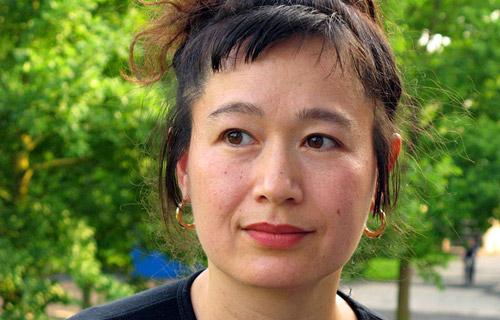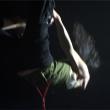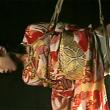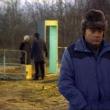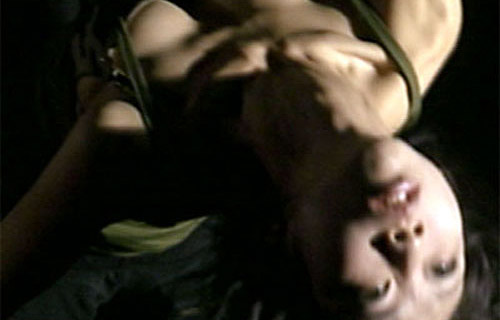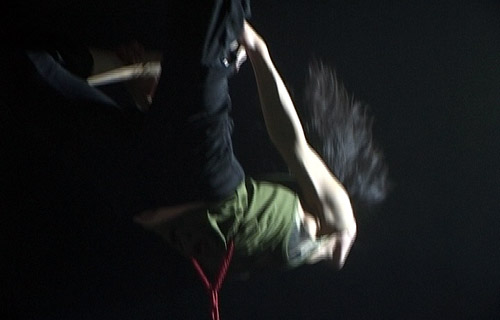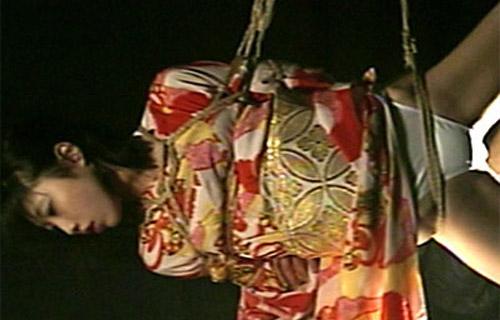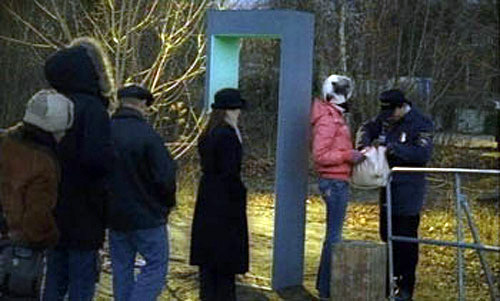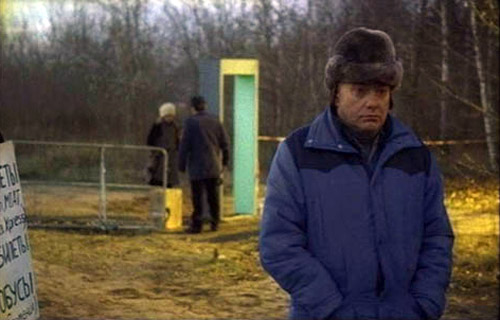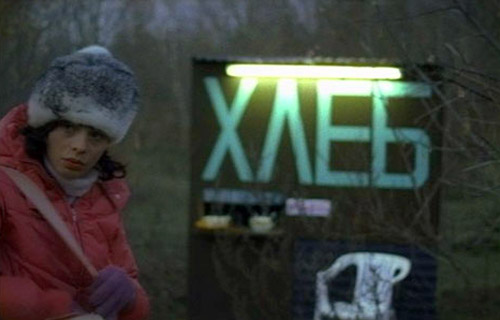Просмотров: 12172
Letter from Berlin: "There Will Be More Bullshit As the Crisis Deepens"
Hito Steyerl and David Riff worry that the YBAs will soon be making political art
Last week, after arriving in Berlin, I went to the Kunstwerke. I was there to see a screening by the Artists' Film and Video Association, a new group recently founded by some of my favorite filmmakers and video artists. The space was packed; the group spoke and showed videos to a standing, kneeling, squatting audience of 300 someodd people. I spent around an hour on the floor in a Yogi-pose listening and looking at some big German guy's back. The discussion was very interesting and raised many historical, aesthetic and political questions, but after someone kicked me in the kidneys, I decided to leave, promising myself to contact Hito Steyerl, one of the artists who introduced the evening, later on.Hito Steyerl is really an interesting filmmaker whose politically incisive, highly artistic documentary films tackle themes like gender, idenity, and translation. It is perfect stuff for people like me who love intricate literary narratives and grungy home-made aesthetics on multiscreens. The last documenta featured her films "Lovely Andrea" (an epic post-punk story about a Japanese bondage photo of a lost friend), part of which you can watch on YouTube. I like Hito's work very much, and have worked with her as a translator. So I was very exited when she and her husband Boris Buden invited me to their apartment in Kreuzberg for dinner on a cold wet evening in January.
When I came in, they offered me a glass of wine, and we started talking about the evening at Kunstwerke. Hito said right away that she was completely overwhelmed that it was so full. "It was terrible. We were totally not expecting so many people. Each artist brings at least ten people, which already explains about eighty or so people in the audience..." And the other two hundred, I asked. She looked really perplexed. They were all between thirty and fifty: students, colleagues, and other precarious cultural producers (as they are called here), but other than that? "No idea," said Hito, and lapsed into a thoughtful silence.
"One interesting explanation I heard from the curator," she finally said when she spoke, "is that something is really changing in the whole structure of viewing moving images. Video is always shown under very difficult conditions. The sound is off, or there's never enough time to watch it all. But for some reason, when you make a video show like the one currently on at Kunstwerke, people are actually coming to watch films. People are really turning away from television and Hollywood, not because they disagree with it, but because it's total shit. It's just not interesting at all. So they are looking to filmmakers and video artists in contemporary art to satisfy their demand for meaning, for subjectivity."
This made me think of how people are turning to YouTube and the internet, so I wondered out loud whether there is any convergence between films in the context of contemporary art and that new medium. You watch YouTube very selectively, very interactively; you read and choose what to watch for hours on end, you choose when to stop. And this is what you do at an exhibition. There is an interface between these two modes of reception, and it has a political potentiality that we all feel, whose aesthetic dimension is almost unknown. "I think you're probably right about that...," Hito said. And really. She had started the screening with a YouTube clip on the famous Cannes Film Festival of 1968, which a group of filmmakers around Truffault and Godard managed to close down in solidarity with protesting students and workers.
After the clip was over, Hito had said that it showed one way in which collective action can bring politics to cultural production, namely a takeover or shutdown of institutions, something that is obviously hard to imagine today. But was even more interesting, she said, were the aesthetic consequences that authors like Godard drew.
These are perhaps best illustrated, said Hito, by films like "Tout va bien" (1972), which is about how workers occupy a sausage factory and take its management hostage along with journalists who are making film on workers conditions. Today, it is impossible to make films about factories, because these films are not shown to mass audiences of workers, but in art museums. "Artists find themselves interned in santized bourgeois institutions." But, said Hito, one could turn this around and say that the spaces of contemporary art are the factories of today. They are the place where knowledge is produced. And that leaves us to ask the uncomfortable question of whom we should take hostage: the audience, the management, or ourselves? This is a question she left unresolved, and it lingered.
"They wanted you to read a manifesto," I later told her.
"They all came looking for some messianic moment. But we couldn't give it to them."
"Maybe they were right to ask for a manifesto," I wondered.
"Yes but we couldn't do that. I can't tell them what to do. This is not what I am for. I am for analysis...A big problem is that 80% of all so-called engaged or critical art is just bullshit, so that manifestos are little more than marketing strategies. To read manifesto is normal, and just gives people a taste of politics and of collectivity, both of which are extremely desirable commodities. That's what people really want. Some real collectivity. It's an expensive commodity..."
Indeed, when you hear that a number of well-known video artists have joined as a common platform for production, distribution, and discussion of films, you immediately expect a "supergroup" that will play a specific repertoire. All the more because some of the members of this particular supergroup are quite famous for being "political" in ways that are really far from obvious. Moscow audiences might remember Clemens von Wedemeyer's film from the first biennial, in which he staged the lines and security checkpoints outside Moscow's German embassy, on a set in Berlin's Grunewald and using members of Russian immigrant diaspora, filming them in one slow continuous pan. His more recent film, made together with Maya Schweizer, also a member of the new cooperative, was shown at the screening and is called "Metropolis." It imagines Fritz Lang's classic on a research trip to contemporary China in flashes of reflection. Koken Ergun is also well-known, but for far more straightforward work; his film TANK LOVE, in which a T-55 rolls down deserted European streets, recently caused a stir at the U-TURN in Copenhagen. And Yael Bartana, who was not there that evening, is generally considered one of the most promising video artists of recent years. Her film "Summer Camp" (2005) was featured at documenta, and was also shown at the screening.
But what can such different artists do together? At the screening, Hito and the other members of the collective talked about their reasons for joining forces. The members of the new collective spoke about the importance of having colleagues to talk to, about the importance of discussions as such, and about how individuality is stamped upon (said as someone was about to step on my hand) in the age of growing fluidity and individualization of production. Clemens said that it might grow into something like a production company, but "not like one you think." And so on. Real collectivity is confusingly pragmatic, politically indeterminate, and somehow always at cross-purposes.
So the audience seemed frustrated. One person said that she didn't get it: "Are we here to talk about a new artist's collective, or to discuss politics and film?" "We are discussing the changing historical conditions under which collectives can work. As one says, when in doubt, always historicize, and that is what we're doing," Hito answered. An American guy asked for some very concrete points of "what you've been discussing," but was immediately interrupted by another American who said that she demanded complexity. "I'm sorry but in this time, if Americans can vote for an educated intellectual, then a bunch of people sitting around in Kunstwerke don't need a bullet point list of topics." That emotional outburst somehow involving Barack Obama was the end of the discussion, and more films were shown.
Later, I told Hito that I thought this ending was a little stupid, and asked them what the crisis was doing to people in Berlin, and whether everyone was so crazy about Obama.
"Do you think there will be less bullshit as a result of the economic crisis?" I asked.
"No," Hito answered, "there will be more bullshit. Resources will melt away, and the market will crumble. Which means that many artists who are now illustrating the commodity form will soon migrate to where it's safer, to the museums, where they will illustrate a political and social context. What else can they do? And I think they will start making so-called political art. Just imagine: Tracy Emin and Damien Hirst will become political artists, they will start making socially and politcally engaged pieces."
"What will that mean for people who have been making this kind of work all along?"
"It means that we won't be able to compete with the sheer productive force. But we will see manifestos from those people in the coming years..."
Then the doorbell rang, and Florian Zeyfang, another university teacher, critic and filmmaker from Berlin, joined us. He asked us what we were talking about, and when someone told him, he wondered whether there were any artists already making political art on the right? "Even Jake and Dinos Chapman or Damien Hirst haven't done that, even if they were sponsored by the Thatcherites of Saatchi. There is a taboo on conservatism and an even bigger taboo on Nazi rhetoric, no?"
"Well, not exactly," I told them. "You've all heard about the Kandinsky Prize."
"Yeah, we've heard about that," they all said in chorus, and started laughing pochemu to.
"What kind of fascist was that guy again," asked Hito when the laughter died down.
"Well, he says he's not a fascist but a neo-Eurasianist, a proponent of the conservative revolution, the greater Russia, and an admirer of Stalin and the Strasser brothers, probably... When he was accused of being a Nazi, he said that he was surprised, that people always accused him of being a socialist... I would call it a performative crypto-fascist politics of the New Right..."
"That makes sense," commented Hito, "now is the Sternstunde of the left Nazis, of the Strasserites. That is where this crisis is leading politically: left Nazi rhetoric is the best for legitimating protectionism and grandiose social policies aimed at ethnic or national clientelles. We'll be seeing more and more of those people in the artworld. We see them already." I didn't quite know what she meant yet, but nodded eagerly.
We talked about the totalitarian gay aesthetic, about haptic painting and Emil Nolde, about expressive hallucinogens and Peter Doig, and about what was really changing, which is the way people look at art and what they want to discover there. The Leipziger School may not be directly fascist, but Neo Rauch now openly admits to loving nationalist "visionary" Ernst Juenger. And so on...
"More importantly, if you look at it directly without paying too much attention to all those complicated stories, it's the art of the immediate being," said Hito at some point. - "And that's ultimately stronger than all the mediation. Leftist art is always the art of mediation. Like at the screening. We couldn't give them that immediacy of 68. This is the advantage of fascist art: its illusion of immediacy."
"Which, as you were saying before, so-called critical art can't and shouldn't provide."
"Yes. That's the main contradiction."
We all sighed, ending one of the favorite topics of artists in Germany, which is fascism, never mind Barack Obama. "We are pessimists," Boris explained. The roast leg of lamb was excellent. The conversation shifted to other favorites, like censorship in China and Operation Cast Lead in Gaza. Florian left, and we opened what must have been the seventh bottle of wine. We talked about atomization and affects, and at some point, already quite tipsy, I moaned as I always do when I am among friends: "Whatever happened to the universal solidarity of the working people?"
Hito protested vocally. "You can't cram everything back into the simplistic narrative of the white male factory worker. Everything has changed. The factory is the home now too, as well as the museum, and it's productive work to put your children to bed" (Boris was away tucking in their daughter), "Everything is individualized. You can't tell the story of the party or the tradeunion that organizes all the workers and then liberates the world. It doesn't work anymore. It never did. Not in that form." Yes, but maybe the impoverished global middle class will produce a new proletariat, I insisted. Maybe this is why so many people came to the screening? Because they feel that they are the new subjects of history. "Yes," she said, "artists are subjects of history now, really, finally, only now history is no longer moving the way it once did. Either it's stopped, or it's moving backwards, or forward too quickly. But what can we do, I asked her, which narrative should we opt for. "I don't know," she said. "Think of one."
- 29.06Московская биеннале молодого искусства откроется 11 июля
- 28.06«Райские врата» Гиберти вновь откроются взору публики
- 27.06Гостем «Архстояния» будет Дзюнья Исигами
- 26.06Берлинской биеннале управляет ассамблея
- 25.06Объявлен шорт-лист Future Generation Art Prize
Самое читаемое
- 1. «Кармен» Дэвида Паунтни и Юрия Темирканова 3448453
- 2. Открылся фестиваль «2-in-1» 2340549
- 3. Норильск. Май 1268472
- 4. Самый влиятельный интеллектуал России 897657
- 5. Закоротило 822068
- 6. Не может прожить без ирисок 781978
- 7. Топ-5: фильмы для взрослых 758528
- 8. Коблы и малолетки 740805
- 9. Затворник. Но пятипалый 471056
- 10. Патрисия Томпсон: «Чтобы Маяковский не уехал к нам с мамой в Америку, Лиля подстроила ему встречу с Татьяной Яковлевой» 402953
- 11. «Рок-клуб твой неправильно живет» 370382
- 12. ЖП и крепостное право 345038

